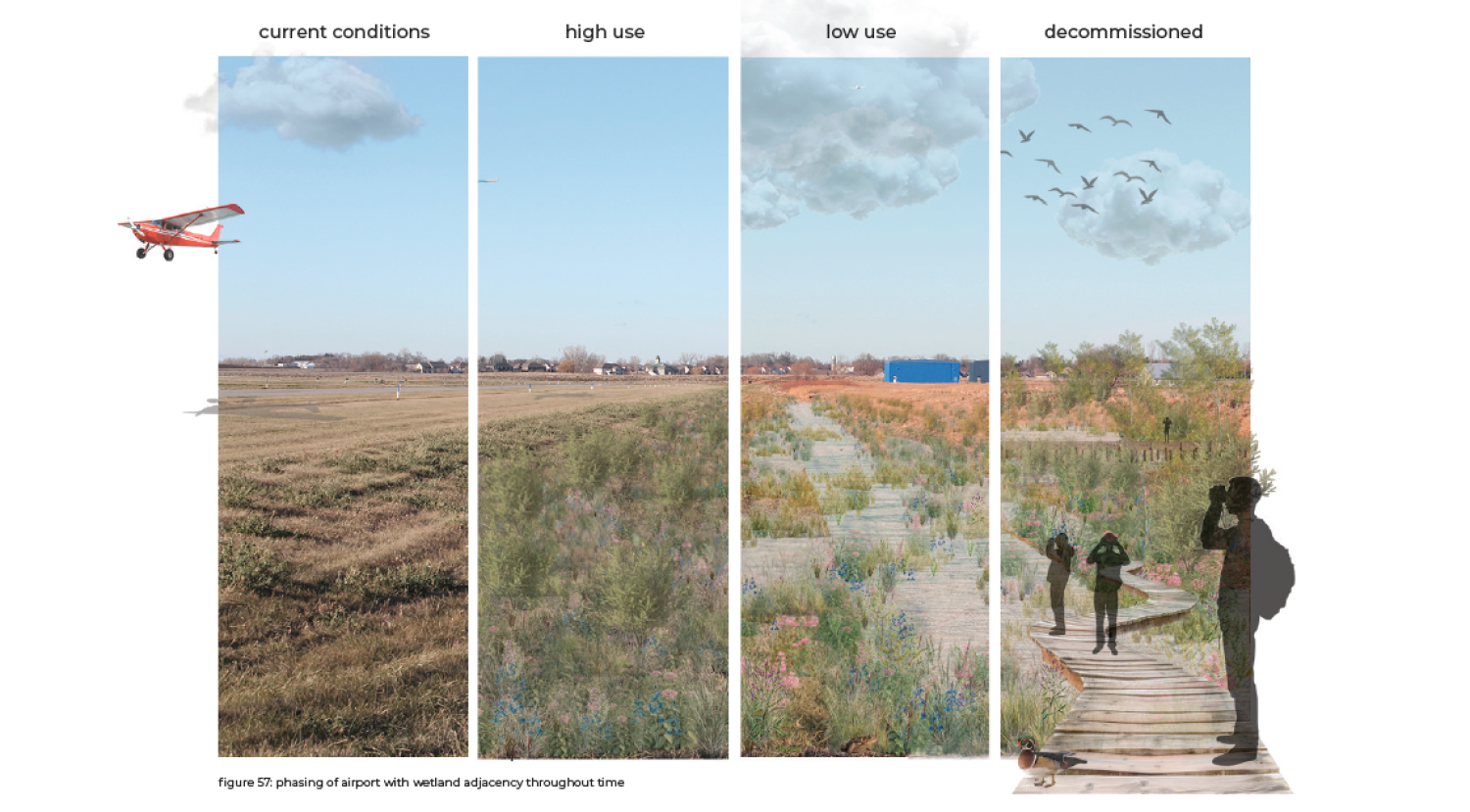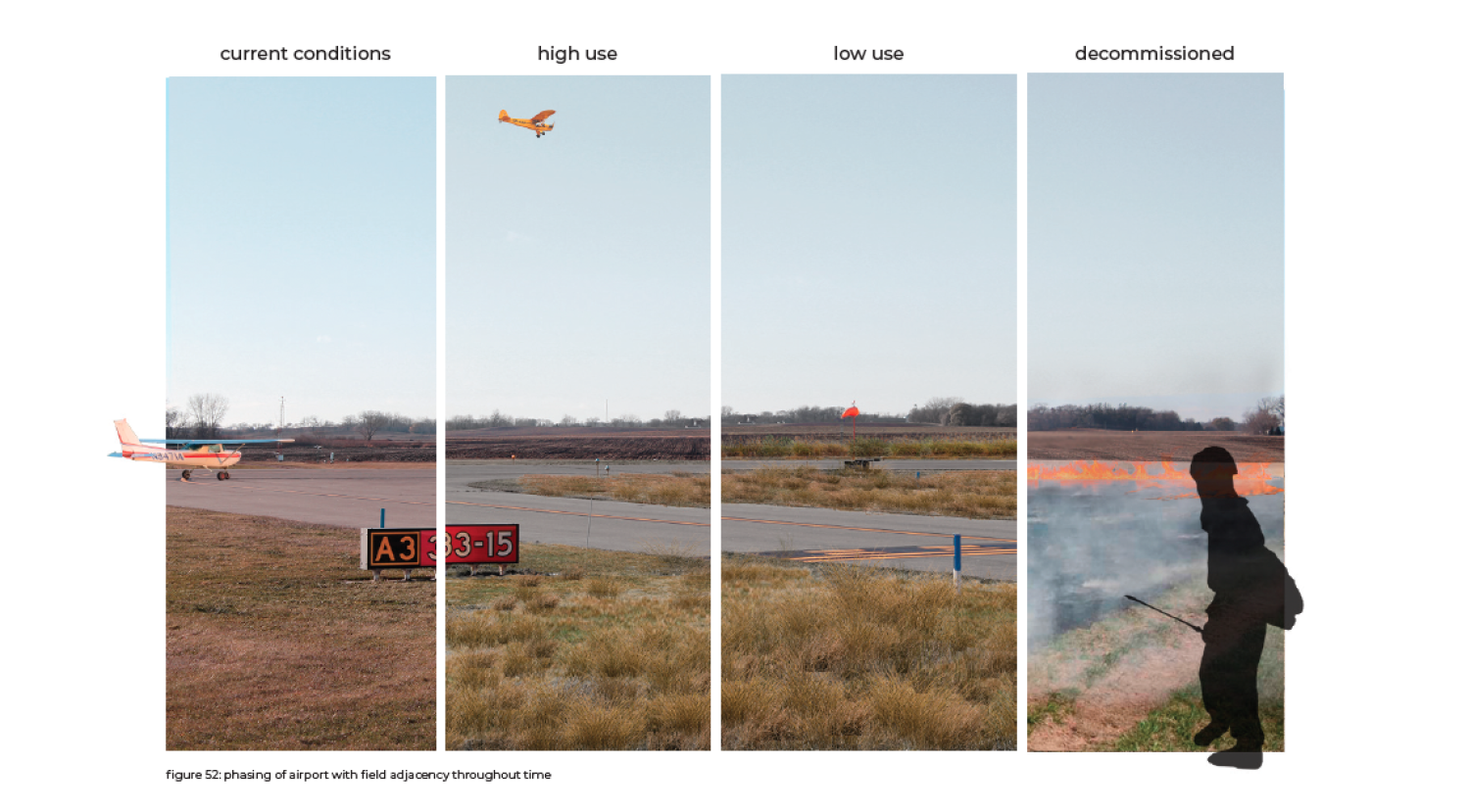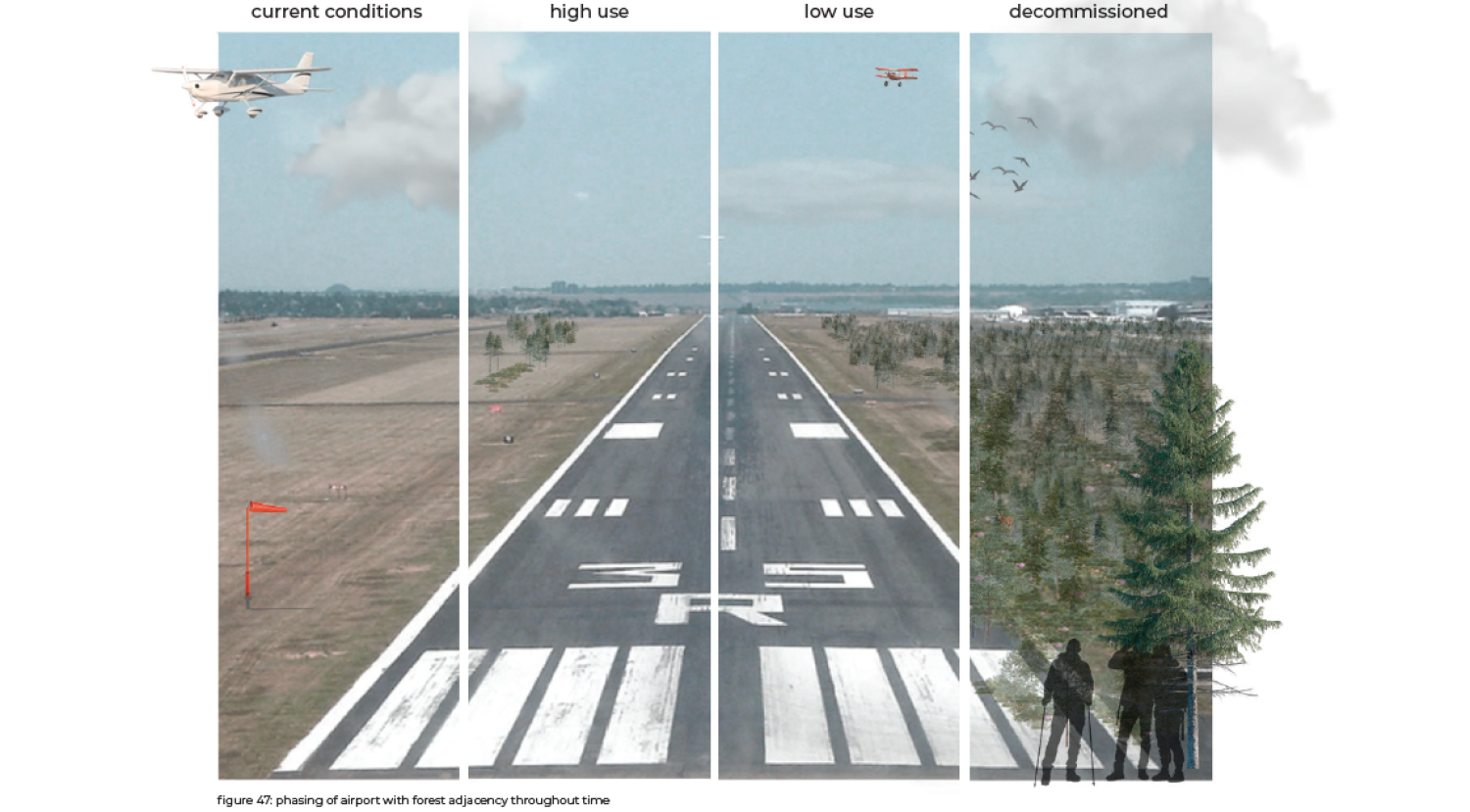Grounded in reality
Illustrations by Dana Leafdale
Two small wheels clattering against the tile floor. Again.
To a young Mary Miller, that sound meant her father, a Delta pilot, was off to work. And while she’d miss her father while he was away, growing up around airports helped Miller fall in love with aviation, too. “I soloed for the first time on my 16th birthday,” she recalled with a laugh. “I always tell people I flew a plane by myself before I drove a car by myself.”
Her passion for flying became a driving force behind her senior thesis, a combined research and design project. Miller (EnvDes’25) conducted fieldwork, interviews and policy analysis to better understand airport infrastructure and sustainability. She then created designs for what regional and municipal airports might look like in a future when they are used less frequently—a shift that is likely to happen in her Minnesota home.
As a hardworking and involved student—she was a member of multiple organizations and held a number of jobs on campus—Miller never got the chance to fly in Colorado. But lessons learned in Boulder—as well as in Medellín, Colombia, where the environmental design department hosts an annual studio—convinced her she needed to conduct her research in the literal airfield.
“You have to ground yourself in a site because no two are the exact same,” she said. “While I was in Colombia, I learned that different areas have their own histories and needs, so it’s important to always consider that.”
In the six-week studio, faculty lead students like Miller in completing local development projects alongside community members and peers from other universities.
“It was definitely one of the best experiences I had as a student,” she said. “It was impactful to work with the community there and realize how much we had changed each others’ lives.”
In all her projects, Miller’s mission is to create impact. Her honors thesis was a chance to do so in an industry she loves.




For her thesis project, Mary Miller created designs of different use cases for small airports to balance their use with their natural surroundings. Used with permission.
“Her passions for aviation and environmental protection come together in her thesis work, where she critically investigates the vast areas of land occupied by airports and explores how they can be reimagined,” said Jota Samper, an associate professor in environmental design and director of the Medellín studio. “Her thesis is, in many ways, a love letter to airports, nature and the people who work in those spaces.”
Initially, Miller studied how to make airports more sustainable, and connected with Zannah Mae Matson, her advisor and an assistant professor of landscape architecture who researches infrastructure. But the project shifted to include the damage airports do to the environment.
Nationwide, regional and municipal airports occupy approximately 1.5 million acres of land. As a pilot, Miller understands that clearing land improves safety, but as a landscape architect, she’s aware of the impact airports have on native plants and animals.
As she interviewed airport managers, Miller learned about the financial, policy, ecology and safety challenges they face. She also identified four ecological systems common to the Minnesota airports she visited: fields, forests, water and wetlands.
Using those habitats as a starting point, she proposed four designs to help those managers rehabilitate the landscape. For example, a busy airport near fields may need more cutting or mowing, while a manager of a quieter airport could allow more native flora and fauna to flourish.
“Instead of immediately proposing to decommission airports, she’s suggesting something that could be done alongside functioning ones, which is a really nuanced view,” Matson said.
Miller’s dedication and thoroughness paid off: She earned top honors for her project and presented her research at this year’s Environmental Design Research Association conference in Halifax, Nova Scotia.
She’s still figuring out the next move for her career, but hopes to keep this project in the air. She credited her education with giving her perspective on her future.
“My environmental design education proved what a huge range design can offer, and how it can apply to anything, like communication or journalism,” Miller said. “There are so many directions my degree could take me in.”

“Her thesis is, in many ways, a love letter to airports, nature and the people who work in those spaces.”
Jota Samper
Associate Professor
Environmental Design
Hannah Stewart graduated from CMDI in 2019 with a degree in communication.

